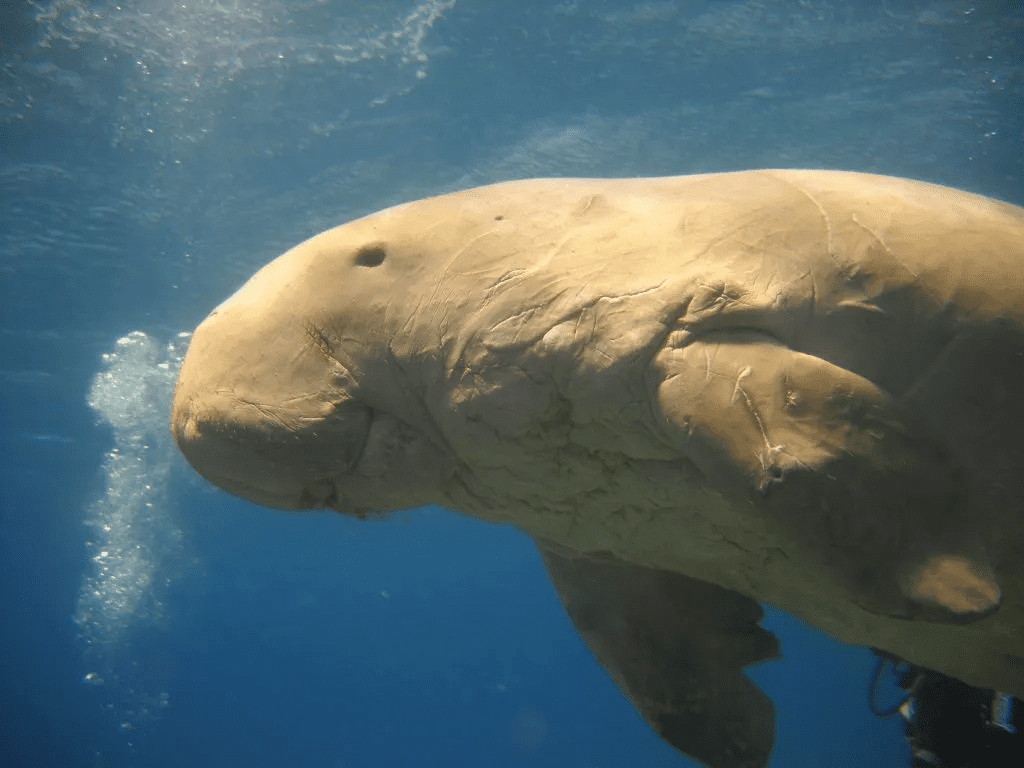Dugongs are experiencing a huge population decline in China, especially during the 20th century. In a study conducted by research experts, only 5% of 788 respondents had reported past dugong sightings while there were 3 who reported sightings from within 5 years. There was a peak around 1960 and then a decline around 1975 onwards. There were no records documents after 2008 or any verified field observations after 2000. This shows that the dugongs are experiencing rapid population collapse and are functionally extinct.
A new report published in Royal Society journal by Mingli Lin, Samuel T. Turvey, Chouting Han, Xiaoyu Huang, Antonios D. Mazaris, Mingming Liu, Heidi Ma, Zixin Yang, Xiaoming Tang and Songhai Li states that Dugongs are practically extinct.
The dugongs are the only strictly herbivorous marine animals and the only extant species in the family Dugongidae. Dugongs are historically recorded from all the countries that border the South China Sea (SCS), including China, Vietnam, Cambodia, Thailand, Malaysia, Brunei and the Philippines.
However, the near-shore habitats inhabited by dugongs were overlapping with the activities of the fishers and other marine resource users, making them vulnerable to human pressures. The species is listed as “vulnerable” by IUCN and as a Grade 1 National Key Protected Animal since 1988 by the Chinese State Council. It’s recent status is poorly understood in China and it’s completely extinct in Taiwan, with sporadic stranding records suggesting continued survival elsewhere.
An interview survey was conducted in fishing communities along the coastal region of northern SCS, including 66 villages in 22 municipalities across 4 southern Chinese maritime provinces (Hainan, Guangxi, Guangdong, Fujian).
There were interviews that were conducted between 15 July and 13 August 2019 by four researches with the knowledge of marine mammals and 21 trained volunteers recruited from local universities. They received training in dugong identification and interview skills before conducting interviews.
Local Ecological knowledge data was collected following a standardized methodological protocol developed for conservation research in Chinese fishing communities and previously applied to research on SCS marine mammals. There were interviews that were conducted which focused on the SCS ecosystem and it’s fisheries, including the age, education and fishing history of the subjects. They were shown the illustrations and pictures of the dugongs are were asked to recognise them.
Although dugongs are probably now extirpated from China, efforts to evaluate, conserve and recover the region’s seagrass ecosystem, a key habitat for dugongs and wider regional biodiversity, is now becoming a conservation priority in Chinese waters along with the protection of other marine habitats. Current rapid economic growth in China and other countries around the SCS, demonstrated through the recent release in coastal economic activities like fishing, boat based tourism and marine construction is altering the structure and function of critical marine habitats and impacting marine mammals and wider biodiversity across the region. Improved monitoring is essential to protect endangered mammals. The extinction of an emblematic species such as the dugong in China raises further concerns for other threatened marine mammals within a system where human activities now dominate the seascape.
China being home to almost one-third of marine mammals in the world, such a swift decline comes as a warning that local extinction can occur within short periods. Dugongs are long-lived, late-maturing species with low reproductive rates, and hence its conservation becomes more essential. Persistent hunting along with the degradation of seagrass beds and accidental entanglement have probably enabled the rapid collapse of China’s dugong population. Many other species populations are declining swiftly, and needs urgent attention. While there may be future evidence that dugongs might survive in China, the study provides important evidence of the probable regional loss of a charismatic marine megafaunal species and the first functional extinction of a large vertebrae in Chinese coastal waters.
It is concluded that there is no evidence that suggests that the remnant dugong population can persist within the northern SCS and the species is likely to be functionally extinct. Because of its potential for long-distance travel, sightings along the Chinese mainland could possibly be of mammals from neighbouring habitats. The study suggests a potential dugong breeding ground with ample seagrass beds in the Philippines, which is around 600km away. The researcher also negates possibilities of Chinese Dugongs shifting northwards along the Chinese coast due to the degradation of seagrass beds even in the northern regions.


















